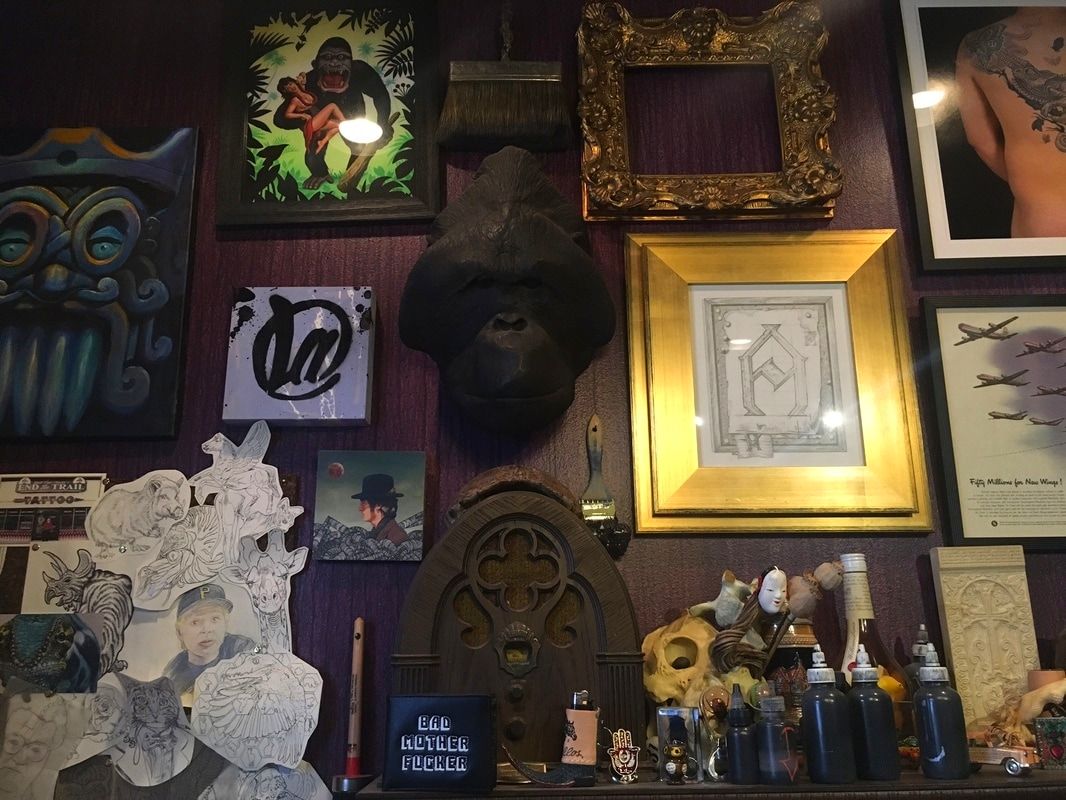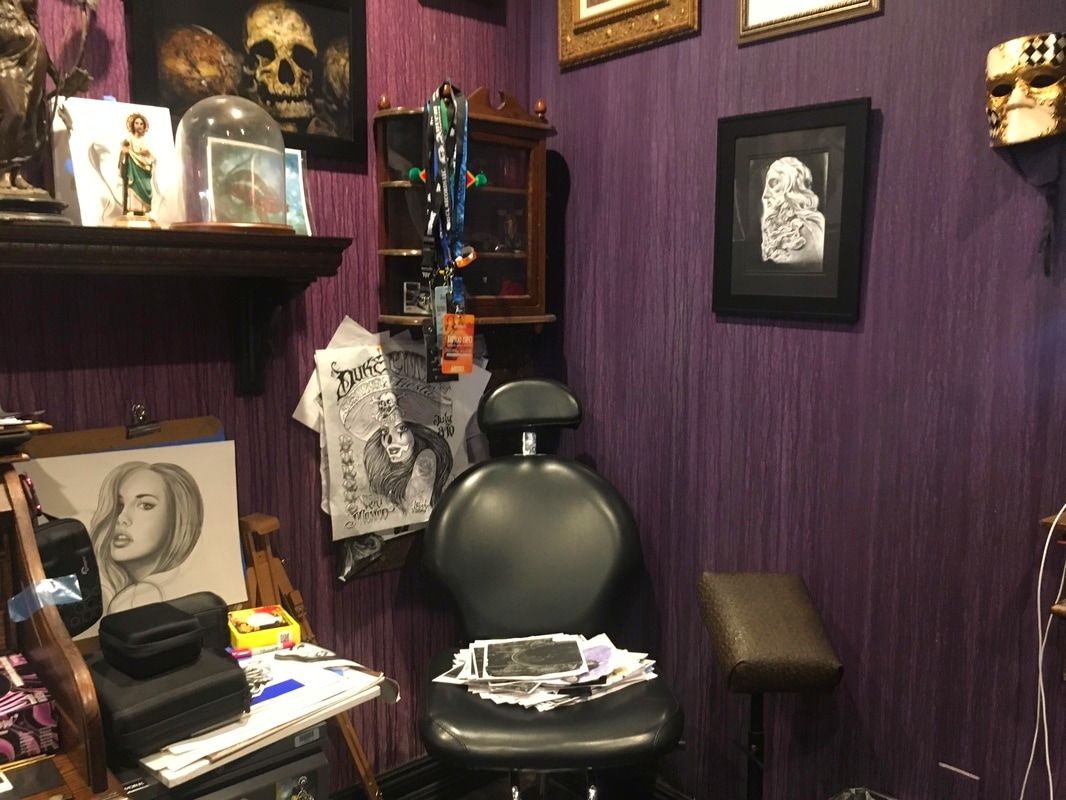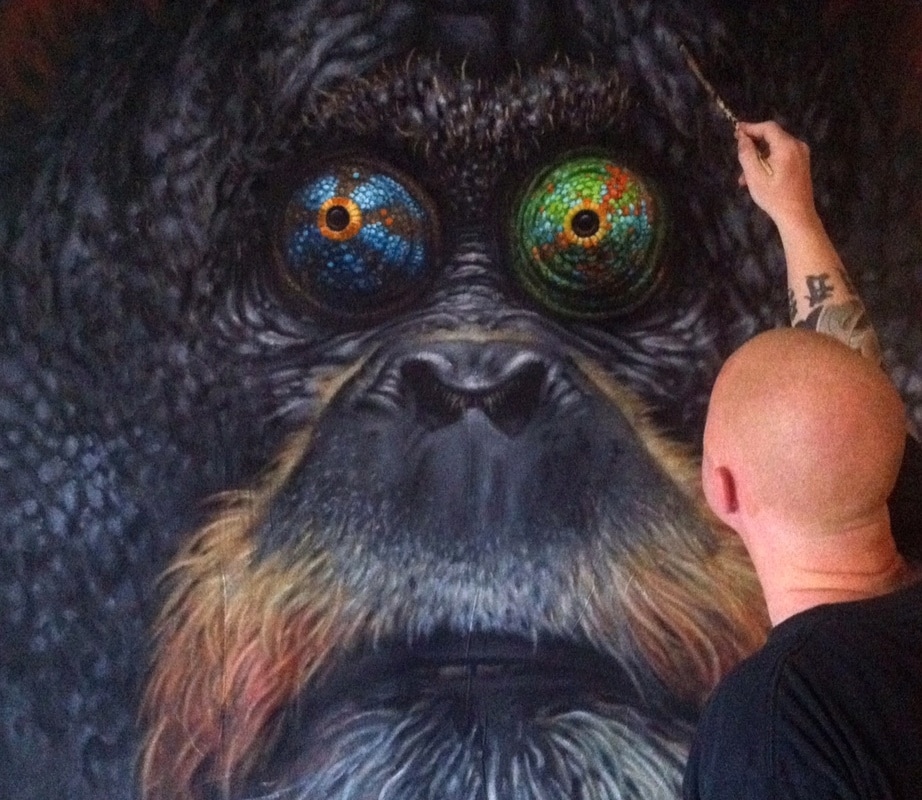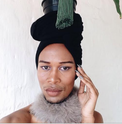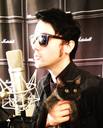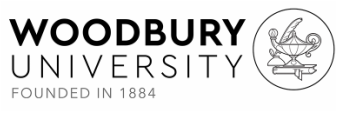- About Us
- Features
- Archive
- Videos
- The Secret success of Elmer Street
- Flying High From Below: LA's Fernando Martin
- Lip Candy
- Wafa Jaffal & her journey in Post Production!
- Guide to making a delicious arepas for your meal by Adolfo Can
- Waterworld
- Khanh's Kitchen
- From Las Vegas to LA
- Lighting the World Around Us: An Interview with Angela Gundelfinger
- Eating Disorder Healthcare: Mishna Erana Hernandez
- Meet Our New Staff!
- Meet Carlos Chavez!
- Meet Nicole Favors
- Meet David Petrosyan
- Meet Brittney Strong
- Meet Kaci Theros
- Meet Katrina Molle
- Hopping into the year of the Rabbit: Alhambra’s Lunar New Year Celebration
- 2023 Solar Decathlon
- Depop: A Circular Fashion Community
- Inside the Afro-Mexican Identity
- Meet Mimi Chao: Magnificent Creator of Mimochai
- Who’ll be the top dog? Let’s check out the annual Corgi Winter Nationals
- The Fine Line That Connects Skincare to Culture: Asian Skincare Routines
- One Of The Key Ways To Protect The Oceans Is To Rethink What We Are Doing On Land
- The Fine Line That Connects Skincare to Culture: Asian Skincare Routines
- Growing Up With a Mixed Family Made Me Confident in Being Afro-Latina
- The Benefits of Shopping At Your Local Farmers’ Market
- Discovering Voice: An Interview With Nicole Favors
- Short Form: New Creative Producing Track At Woodbury University
- Housing Crisis in Los Angeles
- How Minimalism Can Benefit Your Life as a Student
- "Insights from Fashion Marketing Chair and Forecasting Expert Wendy Bendoni on the Evolving Landscape of Fashion Consumption and Sustainability"
- The Gun Violence Issue in America
- From the Court to Console: An Interview With Tim Parham
The enigmatic Los Angeles native Evan Skrederstu cannot be put in a box. To say he’s just a muralist, painter, tattoo artist or any other label would be partially correct at best. As a working artist of the past two decades Skrederstu has worked through different mediums on multiple projects to redefine themes and subjects by juxtaposing, defacing, or emphasizing beauty in what might conventionally be seen otherwise.
In conjunction with UGLARworks, Skrederstu’s recent project The 8th Continent, focuses on the esthetic diversity and linty of color in biodiversity from Madagascar. From first hand experience he acquired an explosion of the senses from his travels and created a show displaying those influences in downtown Los Angeles this past October. But where did this excursion of creativity begin?
In conjunction with UGLARworks, Skrederstu’s recent project The 8th Continent, focuses on the esthetic diversity and linty of color in biodiversity from Madagascar. From first hand experience he acquired an explosion of the senses from his travels and created a show displaying those influences in downtown Los Angeles this past October. But where did this excursion of creativity begin?
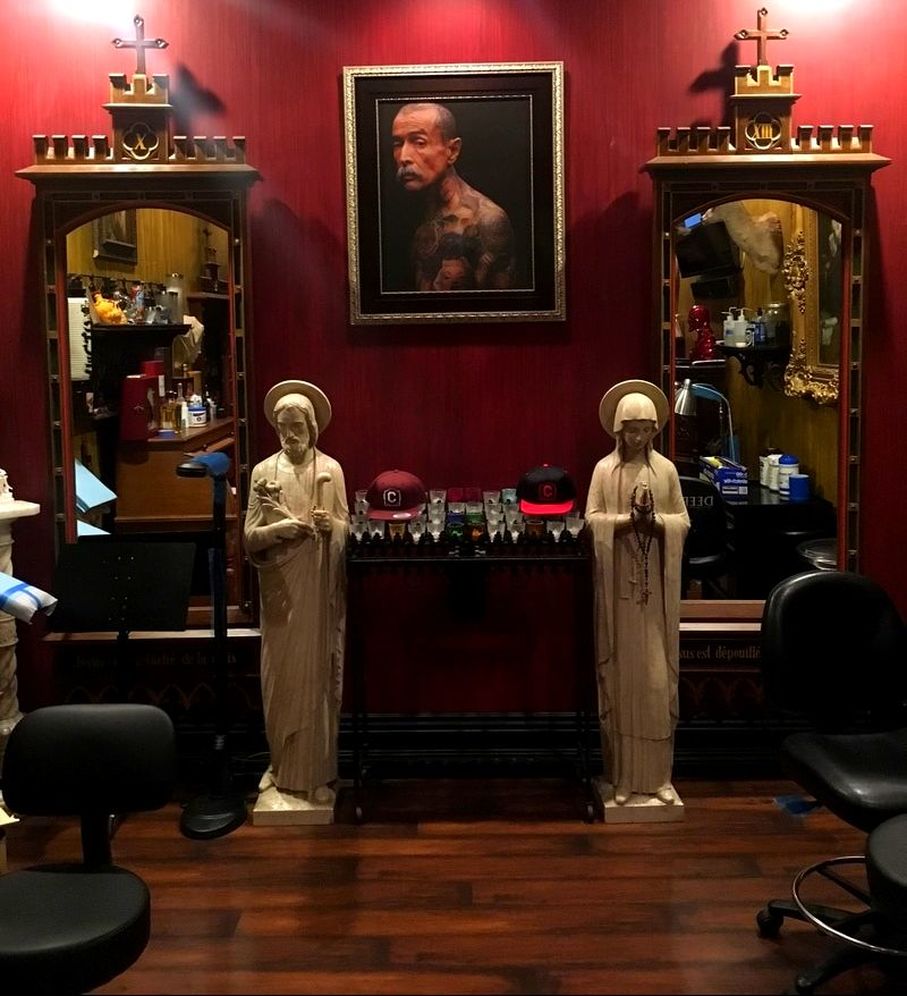
What would be your earliest memory of art having an effect on you?
It’s tough to say, but I definitely remember seeing Kent Twitchell’s orchestra players; his giant mural on the 110. Because at the time you didn’t really see large scale paintings or realism on that scale. I think being a little kid, it blew me away… how did these giant hyper-realistic images get on the side of this building?
Would you say that was the specific moment you were “bitten by the bug”?
I’ve been thinking about this for the last couple of years. Sigmund Freud tells us a lot does stem from your childhood. The first movie I ever saw was Star Wars. From the early 80’s to mid 80’s, it was a cool time to be a kid. We were getting this more refined creative product that came out of the 60’s like Jim Henson and George Lucas. For me, I think I’ve always had a good imagination and it took me a long time to get good enough and then to figure out that visual art was the way I wanted to apply my ideas. I got into skating at a young age, I was probably like 9. The graphics on skateboards have always been, and still are, pretty striking. When I was younger Powell Peralta was pumping out all the iconic etching style illustrations. It was just like cool stuff to be around when you are a kid you now. And that stuff still holds up, and I would try drawing album covers and skateboard stuff, but I don’t think more than any other kid did. I was just trying to copy stuff that looked cool.
Would you say that music had an influence?
It all intertwines. I remember looking at Thrasher magazine when I was 9 or 10. As you know, it’s a magazine. There’s a design that goes into it. Then punk rock bands and other types of bands were advertising those magazines. DogTown and all these other companies had artists coin their graphics or ads that wasn’t the kind of stuff you would see anywhere else. Now you go on the internet and you get it all right away and you can research the heck out of it, but back then it was all kind of mysterious and it made it more fun. It was the skateboarding is not a crime, heavy metal, punk rock era. I came to realize all the sub cultures that I was involved in or looked up to as a kid have slowly become pop culture. And once the genie is out of the bottle you can’t put it back in. Now skateboarding is a multi-billion dollar sport and it’s in the Olympics. Then you were just an outcast that a select group of people marketed to. But then again, things change. Regardless of how you feel about it, things change. They always have and they always will. That’s one of the realizations I came to doing the LA River Book.
Could you describe the concept of doing the LA River book?
Again, it goes back to being exposed to all that creativity as a kid and then going into my teenage years. By the time we started working on the book, we were in our early twenties. Me, Chris Brand and Steve Martinez. I had a whole other sci-fi story I wanted to do but we all spent a lot of time in the river and we said “hey let’s do a book.” We love the place, it’s kind of mysterious. It’ll probably take like a year and it’ll be a good way to show what we can do and to really research something. 7 years later we had 1/3 of what we wanted to finish. But we learned an enormous amount in the process. I knew I didn’t have the time, patience or money to try and make a movie so the whole book process ended up working out pretty well.
How DIY was the process?
There were resources, but everything was very dry. The main one we referenced was at the Downtown library, it’s called “the LA River master plan” written in a bunch of documents that were put together by the city for the revitalization plan. That was 96’ so we have already seen a lot of it happen. I think that was part of the reason we did the book, because there was so much culture behind it. There’s biology, there’s people and there’s folklore. It was just a series of dates and historic events. It may seem kind of bleak from a distance but there is a whole culture around it. Now, years later, people are starting to explore the inner city a little more and pay a little more attention. I guess at the time we just felt like it was too cool to be overlooked.
It all intertwines. I remember looking at Thrasher magazine when I was 9 or 10. As you know, it’s a magazine. There’s a design that goes into it. Then punk rock bands and other types of bands were advertising those magazines. DogTown and all these other companies had artists coin their graphics or ads that wasn’t the kind of stuff you would see anywhere else. Now you go on the internet and you get it all right away and you can research the heck out of it, but back then it was all kind of mysterious and it made it more fun. It was the skateboarding is not a crime, heavy metal, punk rock era. I came to realize all the sub cultures that I was involved in or looked up to as a kid have slowly become pop culture. And once the genie is out of the bottle you can’t put it back in. Now skateboarding is a multi-billion dollar sport and it’s in the Olympics. Then you were just an outcast that a select group of people marketed to. But then again, things change. Regardless of how you feel about it, things change. They always have and they always will. That’s one of the realizations I came to doing the LA River Book.
Could you describe the concept of doing the LA River book?
Again, it goes back to being exposed to all that creativity as a kid and then going into my teenage years. By the time we started working on the book, we were in our early twenties. Me, Chris Brand and Steve Martinez. I had a whole other sci-fi story I wanted to do but we all spent a lot of time in the river and we said “hey let’s do a book.” We love the place, it’s kind of mysterious. It’ll probably take like a year and it’ll be a good way to show what we can do and to really research something. 7 years later we had 1/3 of what we wanted to finish. But we learned an enormous amount in the process. I knew I didn’t have the time, patience or money to try and make a movie so the whole book process ended up working out pretty well.
How DIY was the process?
There were resources, but everything was very dry. The main one we referenced was at the Downtown library, it’s called “the LA River master plan” written in a bunch of documents that were put together by the city for the revitalization plan. That was 96’ so we have already seen a lot of it happen. I think that was part of the reason we did the book, because there was so much culture behind it. There’s biology, there’s people and there’s folklore. It was just a series of dates and historic events. It may seem kind of bleak from a distance but there is a whole culture around it. Now, years later, people are starting to explore the inner city a little more and pay a little more attention. I guess at the time we just felt like it was too cool to be overlooked.
“It was the skateboarding is not a crime, heavy metal, punk rock era. I came to realize all the sub cultures that I was involved in or looked up to as a kid have slowly become pop culture.”
Is being versatile something that was always important to you?
I went to an art high school… the LA County High School for the Arts at Cal State LA. I got a little bit of a head start. But to be honest, I didn’t get as much out of it as I could. It just wasn’t quite what I expected. After that, instead go going to college, I worked as a set painter… a scenic painter. I worked with a lot of amazing commercial artists. That’s part of the reason that I want to put myself in some of these paintings in the act. If you are doing your job right, nobody should know you are doing it. We were taking ply-wood and making it look like aged marble or stone or mahogany. A lot of people think fine art is all about going to art school and following these established schools. A lot of it is experimentation, working with people and observation. Whether it’s through school or your own studies. Once you start looking at the world in a certain way, you can learn something from everything. The way I think, and a lot of this is being around the Uglar guys and other influences I have been lucky enough to meet. It’s not so much about the medium, as it’s about the idea that I’m trying to get across. A certain idea may be better three dimensional or it may be better as a watercolor paintings or a giant mural. The older I get, I look at the subject and I take a little bit longer and say “what’s my idea, and what’s the best route to take with it?.” Any seasoned artist will tell you that’s the beauty of it, you are never going to learn everything. It’s impossible. Once you realize that, and try and pursue your own ideas, the world gets a lot more interesting.
So, you would say your education came form just diving in head first?
I think when I went to the high school, my heart really wasn’t in it. You know all the resources were there for me, but now you can go on the internet and learn how to do anything but you have to have the drive to do it. That’s the interesting thing. A lot of the stuff that I was after was so guarded and secretive, but now its all out there. Now I think the challenge is how you filter information and how you pick the pieces to fit your vision. A conversation I always have with all different kinds of artists is technique versus concepts. I think they are equally important so I try to employ both of them equally. If you are applying your own concepts and ideas to it, you’re creating something new.
What attracted you to murals specifically?
Definitely being around graffiti in the 90’s. When I was a kid, LA was the mural capital of the world. In 1984 when the Olympics came, there was push for murals and I was like 5 years old at that time, driving around the freeways with my parents and taking all that in on some level. I think now, sometimes I will look at the neighborhood or the country or the state that I’m doing a mural in and say, is this me just doing my thing or does this fit into the neighborhood? Will people like it? I think there is a different vibe with murals a lot of the time that’s separate from graffiti. It’s a community thing just for the fact of what it is. It’s a large scale painting that becomes part of thousands, maybe millions of people’s visual landscapes. Sometimes there’s ideas that I think will be a cool painting but it wouldn’t necessarily be a powerful mural. That’s a big part of all of this. Just doing some preliminaries or even just going through the thought process. Is this image going to be powerful on a beetle? Or is it going to me more powerful on a 20 foot wall, or maybe it should be animated or sculpted? I think once you start asking yourself those kinds of questions, you end up coming out with a better finished product. I feel like especially in America there’s been this weird stigma for so long that if you are an artist, you are just a good artist. It’s a God given talent, like you were chosen. And if that’s not decided before you’re 16, then it’s just not going to happen, which isn’t true. I don’t think I am naturally that great of an artist. It’s more that I just had the interest and I kept pursuing it with the right people and going down the right roads and I eventually got where I wanted to go. I do know some people that did work when they were 6 years old and it looked like a teenager did it, but it’s kind of cool to see that stigma getting broken down a little bit.
I went to an art high school… the LA County High School for the Arts at Cal State LA. I got a little bit of a head start. But to be honest, I didn’t get as much out of it as I could. It just wasn’t quite what I expected. After that, instead go going to college, I worked as a set painter… a scenic painter. I worked with a lot of amazing commercial artists. That’s part of the reason that I want to put myself in some of these paintings in the act. If you are doing your job right, nobody should know you are doing it. We were taking ply-wood and making it look like aged marble or stone or mahogany. A lot of people think fine art is all about going to art school and following these established schools. A lot of it is experimentation, working with people and observation. Whether it’s through school or your own studies. Once you start looking at the world in a certain way, you can learn something from everything. The way I think, and a lot of this is being around the Uglar guys and other influences I have been lucky enough to meet. It’s not so much about the medium, as it’s about the idea that I’m trying to get across. A certain idea may be better three dimensional or it may be better as a watercolor paintings or a giant mural. The older I get, I look at the subject and I take a little bit longer and say “what’s my idea, and what’s the best route to take with it?.” Any seasoned artist will tell you that’s the beauty of it, you are never going to learn everything. It’s impossible. Once you realize that, and try and pursue your own ideas, the world gets a lot more interesting.
So, you would say your education came form just diving in head first?
I think when I went to the high school, my heart really wasn’t in it. You know all the resources were there for me, but now you can go on the internet and learn how to do anything but you have to have the drive to do it. That’s the interesting thing. A lot of the stuff that I was after was so guarded and secretive, but now its all out there. Now I think the challenge is how you filter information and how you pick the pieces to fit your vision. A conversation I always have with all different kinds of artists is technique versus concepts. I think they are equally important so I try to employ both of them equally. If you are applying your own concepts and ideas to it, you’re creating something new.
What attracted you to murals specifically?
Definitely being around graffiti in the 90’s. When I was a kid, LA was the mural capital of the world. In 1984 when the Olympics came, there was push for murals and I was like 5 years old at that time, driving around the freeways with my parents and taking all that in on some level. I think now, sometimes I will look at the neighborhood or the country or the state that I’m doing a mural in and say, is this me just doing my thing or does this fit into the neighborhood? Will people like it? I think there is a different vibe with murals a lot of the time that’s separate from graffiti. It’s a community thing just for the fact of what it is. It’s a large scale painting that becomes part of thousands, maybe millions of people’s visual landscapes. Sometimes there’s ideas that I think will be a cool painting but it wouldn’t necessarily be a powerful mural. That’s a big part of all of this. Just doing some preliminaries or even just going through the thought process. Is this image going to be powerful on a beetle? Or is it going to me more powerful on a 20 foot wall, or maybe it should be animated or sculpted? I think once you start asking yourself those kinds of questions, you end up coming out with a better finished product. I feel like especially in America there’s been this weird stigma for so long that if you are an artist, you are just a good artist. It’s a God given talent, like you were chosen. And if that’s not decided before you’re 16, then it’s just not going to happen, which isn’t true. I don’t think I am naturally that great of an artist. It’s more that I just had the interest and I kept pursuing it with the right people and going down the right roads and I eventually got where I wanted to go. I do know some people that did work when they were 6 years old and it looked like a teenager did it, but it’s kind of cool to see that stigma getting broken down a little bit.
“If you are doing your job right, nobody should know you are doing it.”
A lot of the greats will say it’s not an innate talent, I just worked really hard at it…
And maybe I shouldn’t be saying that because it takes away some of the magic of being an artist. But I think the beginning of of any good artist is if you truly enjoy it, whether it’s good or bad, then it’s worth doing. I would love to see art and science work together more. There are all kinds of great projects going on already. I think the kids that are growing up now are really going to flourish and get beyond some of this stuff that society has been stuck on for so long.
How would you correlate that with tattooing?
Yeah, talking about stigmas. I think that’s been lifted a lot but it still hasn’t been recognized as fine art. I guess it’s similar to illustration. For a long time, illustration wasn’t really recognized as art. It was just commercial work that people did for magazines at the time. Not all of it is or should be considered fine art but there are some truly talented artists that happen to be tattoo artists. It’s one of the oldest art forms. It’s been going on since the beginning of man. Graffiti and street art has kind of been accepted as an art form. I think tattoos have a little way to go, but hopefully it will get there soon.
And maybe I shouldn’t be saying that because it takes away some of the magic of being an artist. But I think the beginning of of any good artist is if you truly enjoy it, whether it’s good or bad, then it’s worth doing. I would love to see art and science work together more. There are all kinds of great projects going on already. I think the kids that are growing up now are really going to flourish and get beyond some of this stuff that society has been stuck on for so long.
How would you correlate that with tattooing?
Yeah, talking about stigmas. I think that’s been lifted a lot but it still hasn’t been recognized as fine art. I guess it’s similar to illustration. For a long time, illustration wasn’t really recognized as art. It was just commercial work that people did for magazines at the time. Not all of it is or should be considered fine art but there are some truly talented artists that happen to be tattoo artists. It’s one of the oldest art forms. It’s been going on since the beginning of man. Graffiti and street art has kind of been accepted as an art form. I think tattoos have a little way to go, but hopefully it will get there soon.
“I feel like especially in America there’s been this weird stigma for so long that if you are an artist, you are just a good artist. It’s a God given talent, like you were chosen. And if that’s not decided before you’re 16, then it’s just not going to happen, which isn’t true.”
When talking to Skrederstu, there is no doubt that the reason he has been so successful at such a young age is because he has stayed true to himself, indulged in the things he was most passionate about, and more importantly, he kept his love for various art forms at the core of it all. If anything, Skrederstu teaches us just how important it is to build a career, and more importantly, a life on what you love most. For Skrederstu this was art. But he is more than just the art he makes. From painting, to writing, to being the artist in the tattoo chair, Skrederstu is an artist like no other, as he constantly seeks to reinvent art for himself and others around him. Skrederstu is one of few artists who has dabbled with so many artistic mediums throughout his young life. As he aims to push boundaries amidst his society, and his own artistic boundaries, there is no doubt that Evan Skrederstu is a creative genius, who has managed to create wonderfully unique and vibrant art pieces in almost any art form he puts his hands on.
Follow Evan Skrederstu by clicking the links above.
Links |
7500 |
|
